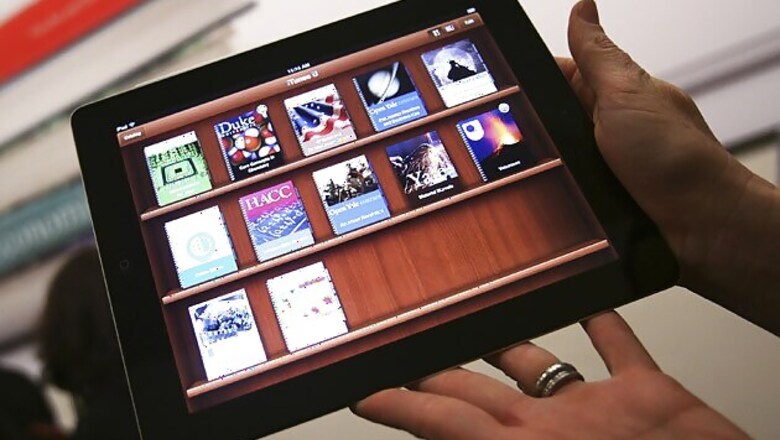
views
New Delhi: For a generation that has learnt to articulate thoughts in 140 characters and knows its smartphones and tabs, e-textbooks are only the next step. But some infrastructure bottlenecks need to be taken care of before that education revolution takes place in India, experts say.
Technology giant Apple recently launched an app for digital textbooks that saw an astronomical 350,000 downloads globally in the first three days.
Educationists agree that digitised textbooks are a key to the future of education.
"E-textbooks do hold the key to the future as the coming generation is tech-savvy. It is the era of computers, trees will be saved and children wouldn't need to carry heavy bags," says Madhulika Singh, principal of Delhi's Tagore International School.
But she also expressed worry over the availability of sufficient resources.
"There are shortcomings at present which will take a long time to overcome. For reaping the real benefits of e-textbooks, we have to presume that every child has access to a computer and internet...a lot of structural reform is needed," she adds.
But there's a lot of enthusiasm over the easy availability and other features of a digitised textbook.
"My eight-year-old daughter spends so much time on the computer that it is difficult to make her read books. But, at the same time, reading online is something she does willingly," says Neelam Tripathi, a software professional working in Gurgaon, a satellite town of the national capital.
"An e-textbook, I think, is nothing less than a boon; it can motivate children to study," she says.
E-textbooks are the very basis for e-classrooms. Its advantage over traditional methods of teaching includes animations and illustrations which are not possible in ordinary textbooks.
Apart from the ability to carry an entire year's syllabus in one's palm, e-textbooks offer the opportunity to learn in multiple mediums - text, video and audio.
Even as India's market for digital textbooks remains limited, booksellers see it as the future.
"E-textbooks are a natural follow-on to the current trend of digital education being introduced in classrooms across India which is making students familiar with the digital medium," says Soumya Banerjee, founder of Attano, a software.
"Educational e-books also have evaluation features as tests and assessments are built into the book which gives an immediate indication of a student's performance," he says.
Founded in 2009, Attano introduced e-textbooks in India, converting the plain textbooks into interactive books with corresponding diagrams and pictures. It makes available e-texbooks from the primary level to Class 12.
"The books are highly user-friendly; even a six-year-old can use it," he says.
"We are focussing on individual buyers; just like parents go to shops and buy the hard copy of a text book, they can buy it online."
"The digitised books elaborate the concepts; for example, if the chapter has to explain the heart and its functioning, the diagram will be digitised, which will make it easy for children to understand.
"Currently most e-books are flat texts with no interactive elements (largely built to cater to novels and fiction). Educational books are different in that they have text, images, tables and references. We're pushing the boundaries to make them more interactive - integrating audio, video, tests and knowledge sources like dictionaries and wikipedia."
A Central Board of Secondary Education (CBSE) official said though the board was considering the idea, it was premature to say anything. "Digital textbooks are interactive. While children enjoy it, they learn as well," he says.
According to Internet World Stats, an international website that features world internet usage, India ranks third in internet usage with nearly 100 million users, comprising 8.4 percent of India's population and 4.7 per cent of world users.




















Comments
0 comment